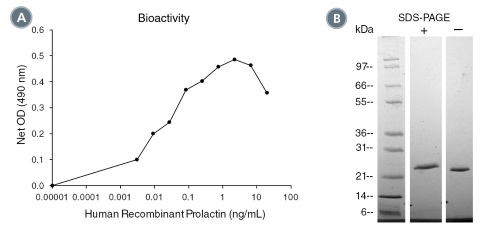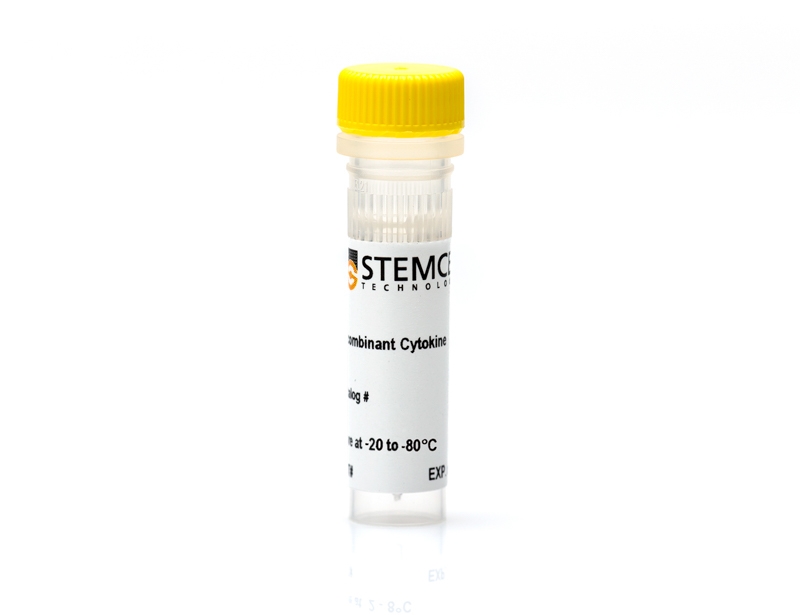Human Recombinant Prolactin
Prolactin
概要
Prolactin is a peptide hormone of pituitary origin and is well known for the stimulation, initiation, and maintenance of lactation. Prolactin is also known to regulate mammary gland development and immune system, and has an essential role in metabolism and behavioral modification (Bernichtein et al.). Prolactin actions are mediated by the prolactin receptor (PRLR), which is a single-chain transmembrane protein composed of an extracellular, transmembrane, and intracellular domain. It has also been indicated that high to normal circulating levels of prolactin increase breast cancer risk, and dopamine agonists have been suggested to be effective for treatment (Bernichtein et al.). Prolactin levels have been reported to be higher in multiple sclerosis patients, which promotes B cell autoreactivity (Correale et al.). It has been shown that administration of recombinant prolactin after bone marrow transplantation in mice promotes immune and myeloid reconstitution (Sun et al.).
Subtype
Cytokines
Alternative Names
Luteotropin, Luteotropic hormone, Mammotropin, PRL
Cell Type
Adipocytes, Lymphocytes, Mammary Cells, Neural Stem and Progenitor Cells, Neurons
Species
Human
Area of Interest
Immunology, Metabolism, Neuroscience, Stem Cell Biology
Molecular Weight
23 kDa
Purity
≥ 95%
技术资料
| Document Type | 产品名称 | Catalog # | Lot # | 语言 |
|---|---|---|---|---|
| Product Information Sheet | Human Recombinant Prolactin | 78098, 78098.1 | All | English |
| Safety Data Sheet | Human Recombinant Prolactin | 78098, 78098.1 | All | English |
数据及文献
Data

(A) The biological activity of Human Recombinant Prolactin was tested by its ability to promote the proliferation of NB2-11 cells. Cell proliferation was measured after 66 hours using a fluorometric assay method. The EC50 is defined as the effective concentration of the growth factor at which cell proliferation is at 50% of maximum. The EC50 in the example above is less than 0.02 ng/mL. (B) 1 μg of Human Recombinant Prolactin was resolved with SDS-PAGE under reducing (+) and non-reducing (-) conditions and visualized by Coomassie Blue staining. Human Recombinant Prolactin has a predicted molecular mass of 23 kDa.



